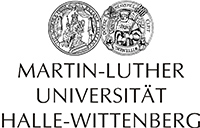
New Spin Waves Pave the Way for Future IT Applications

Conventional IT applications are based on electric charge currents. “This results inevitably in energy losses heating up the environment” said MLU physicist Professor Jamal Berakdar. The researcher added that more energy is needed and also dissipated to operate more powerful and compact devices.
Thus, it is very challenging to maintain the pace of advancement based on charge-current based technology. For their study, the teams led by Professor Berakdar and Professor Chenglong Jia of Lanzhou University examined therefore alternative concepts for data communication and processing.
Their work revolved around something known as magnons. “These are waves that are stimulated in ferromagnets by just a fraction of the energy needed for generating the required charge currents,” explained Berakdar.
“Magnons can be used to transmit signals and for logical operations in various components while producing virtually no heat.”
In this latest study, the German-Chinese research team describes a type of twisted magnons for which the twist or the winding number is protected against damping. Technically the twist is related to magnon orbital angular momentum and can be controlled in magnitude and orientation by electric voltages.
This renders possible a multiplex twist-based signal encoding and transmission across large distances. According to the scientists, the reported results open the way to high density information transmission via magnons.
In addition to the energy efficiency, the magnon wavelengths are controllable and short compared to optical waves which itself is advantageous for miniaturization. Magnonic elements can also be integrated in existing technologies.
Jia C., Ma D., Schäffer A., Berakdar J. Twisted magnon beams carrying orbital angular momentum. Nature Communications (2019). doi: 10.1038/s41467-019-10008-3















